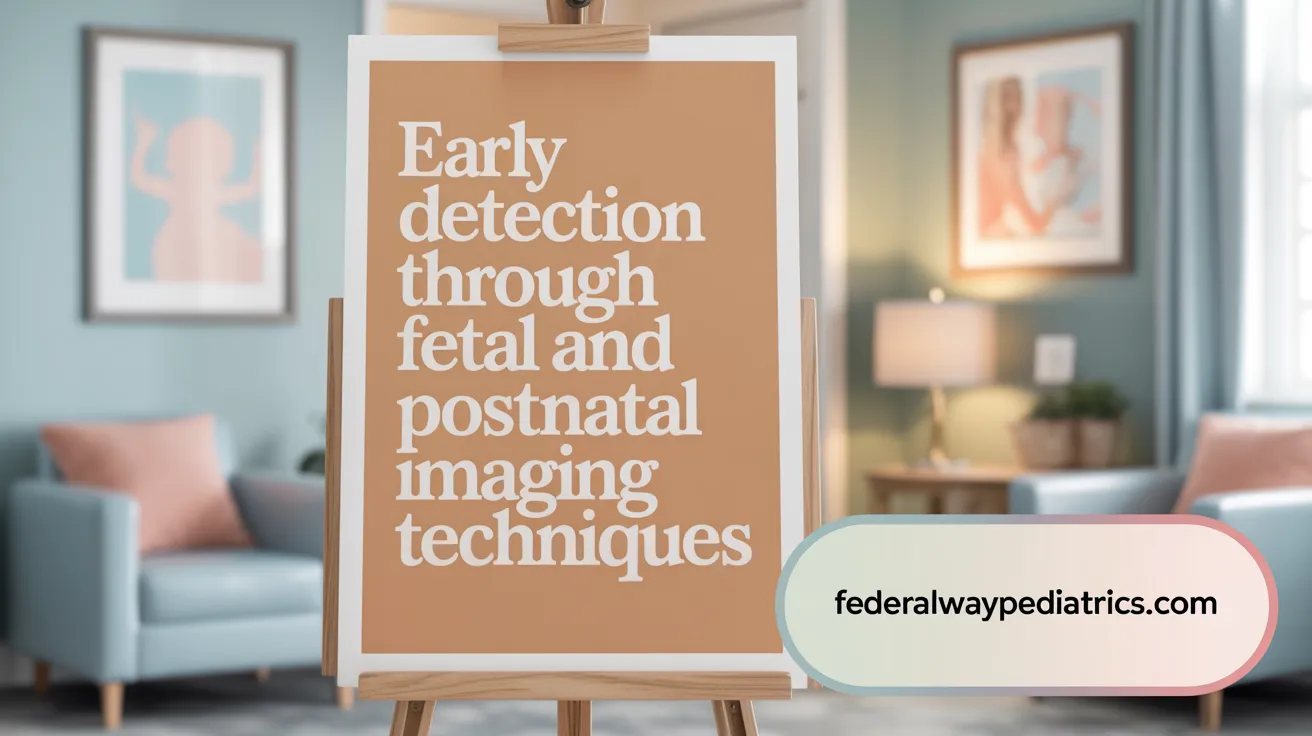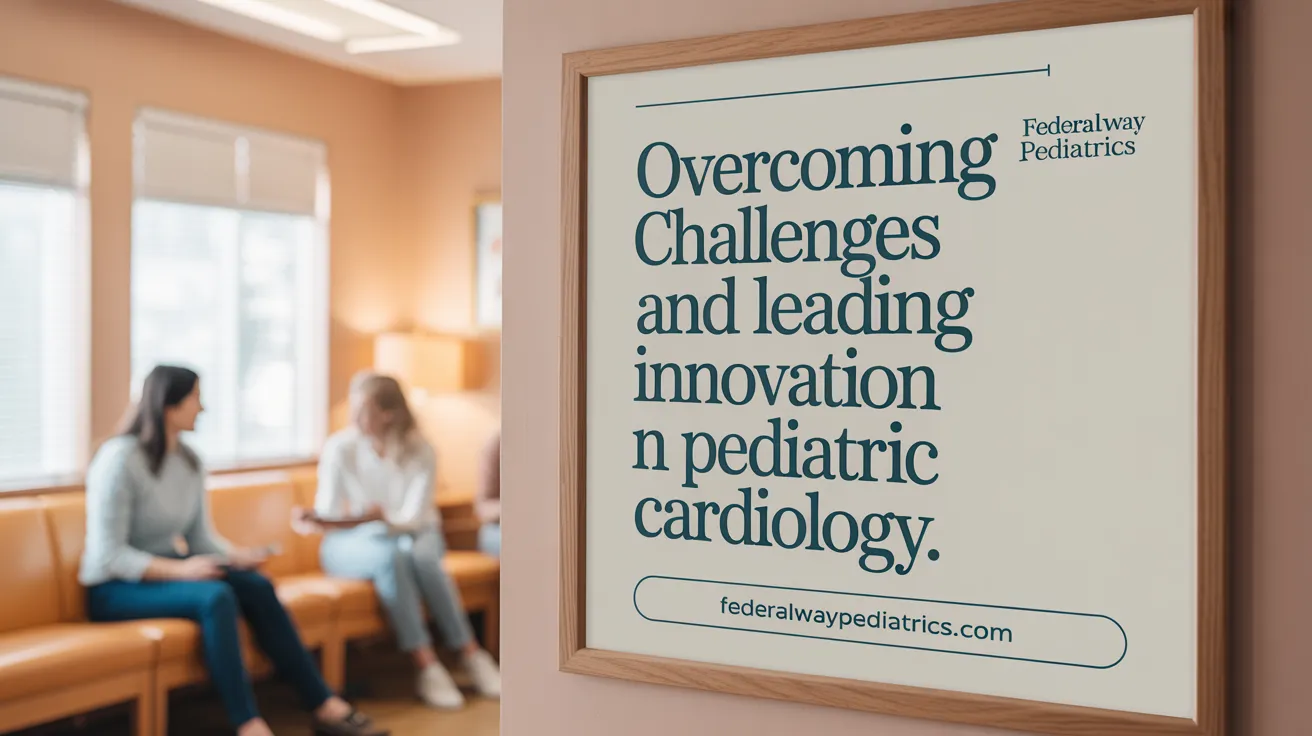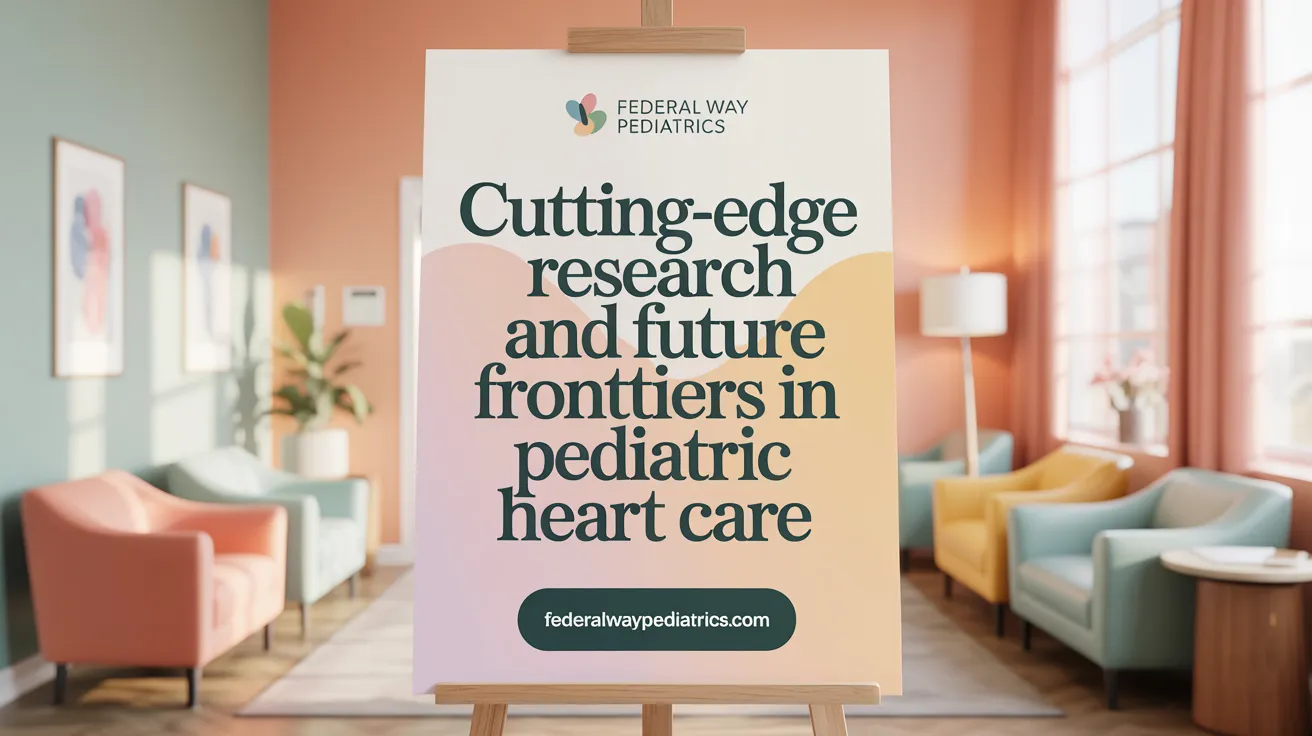Overview of Pediatric Heart Health and Cardiology Services
Pediatric heart health is a critical field addressing congenital and acquired cardiovascular conditions affecting children from fetal life through adolescence and beyond. Advancements in diagnostic methods, treatment modalities, and multidisciplinary care have markedly improved survival rates and quality of life for children with heart diseases. However, challenges such as workforce shortages, healthcare disparities, and evolving care needs persist. This article provides a detailed overview of pediatric cardiology services, recent innovations, and the multifaceted aspects shaping this specialized healthcare domain.
Recognizing Symptoms and Diagnostic Innovations in Pediatric Heart Conditions

What are the common symptoms and diagnostic methods for pediatric heart conditions?
Children with heart problems often show a variety of signs that can alert caregivers and healthcare providers to underlying issues. Common symptoms include rapid breathing, which may occur during feeding or activity, and cyanosis—a bluish tint of the skin, lips, tongue, or nails indicating low oxygen levels. Fatigue and poor feeding are typical in infants, potentially leading to poor weight gain or growth delays.
Additionally, children may present with heart murmurs—whooshing sounds heard during a physical exam—fainting episodes (syncope), chest pain, or abnormal pulse rates. These signs warrant further investigation to determine the severity and specific nature of the heart condition.
The diagnostic process in pediatric cardiology is comprehensive. Physical examination remains foundational, supplemented by advanced imaging and testing techniques. Echocardiography, particularly fetal ultrasound, plays a crucial role in detecting congenital heart defects before birth. Fetal echocardiograms provide real-time imaging of the fetal heart, allowing early diagnosis and planning.
Postnatally, echocardiograms—using sound waves to generate detailed heart images—confirm diagnoses and evaluate heart function. Transesophageal echocardiography, an invasive form, offers clearer images when needed. Electrocardiograms (ECG) record the electrical activity of the heart, helping identify arrhythmias or conduction issues.
In addition to echocardiography and ECG, chest X-rays can reveal heart size and lung involvement. More advanced imaging techniques like Cardiac MRI or CT scans provide detailed structural information, especially in complex cases. Cardiac catheterization involves inserting a catheter into the blood vessels to visualize blood flow and measure pressures within the heart, essential for planning surgical procedures.
Fetal and advanced imaging, combined with genetic testing and pulse oximetry, help clinicians assess the full scope of a child's heart health. Early detection—whether prenatally via fetal ultrasound or after birth—is vital for initiating timely treatment and improving long-term outcomes.
Therapeutic Approaches and Multidisciplinary Care for Pediatric Heart Disease

What types of treatments and care options are available for children with heart diseases?
Children with heart conditions benefit from a broad spectrum of treatment options, tailored to their specific needs and the severity of their condition. These include medications, surgical interventions, interventional catheterizations, and lifelong management strategies.
Medications are often used to control symptoms and support heart function. Common choices include blood pressure-lowering drugs like ACE inhibitors and beta blockers, diuretics to reduce fluid overload, and anti-arrhythmic medication to manage irregular heart rhythms.
For structural congenital heart defects, minimally invasive procedures like catheter-based repairs are frequently employed, reducing the need for open-heart surgery. In more complex cases or when other treatments are insufficient, open-heart surgeries or heart transplants may be necessary.
Lifelong follow-up care is vital to monitor ongoing health, adjust treatments, and prevent complications. Pediatric cardiology teams coordinate these efforts, providing comprehensive support for physical activity, growth, and development.
Thanks to advancements in medical technology and surgical techniques, the outlook for children with heart disease has vastly improved, allowing many to lead healthy, active lives well into adulthood.
Challenges and Leadership in Pediatric Cardiology Practice

What challenges do pediatric cardiology professionals face in providing care?
Pediatric cardiology professionals encounter a broad spectrum of challenges in their practice. A primary concern is managing complex congenital heart conditions that often require highly specialized, multidisciplinary approaches. As many children with congenital heart disease (CHD) now survive into adulthood, cardiologists must provide lifelong care, which adds complexity to ongoing treatment plans.
Access to care remains uneven, especially in rural and economically disadvantaged areas. Families often travel long distances to reach specialized centers, emphasizing disparities influenced by geographic and socioeconomic barriers. Resource limitations in these regions can hinder prompt diagnosis and treatment, making innovative and pragmatic solutions crucial for sustaining high-quality care.
The workforce itself is under pressure. There is a significant shortage of pediatric cardiologists, with only about 4,117 certified specialists in the U.S., and many are nearing retirement age. This creates high demand for care and leads to burnout among providers. The workload continues to grow amidst increasing expectations for performance and productivity.
Emotional and professional stresses are also part of the challenge. Providers grapple with the emotional toll of caring for critically ill children and navigating complex ethical situations. Disparities in access to care, influenced by race, socioeconomic status, and insurance coverage, compound these difficulties, affecting children’s outcomes and contributing to health inequities.
Despite advancements in imaging, surgical techniques, and medical therapies, ongoing efforts are necessary to address training shortages, allocate resources effectively, and develop equitable healthcare models. These steps are vital to meet the needs of the expanding and diverse population of children with heart disease.
Leadership roles and essential traits of pediatric cardiology chiefs
Pediatric cardiology chiefs play a significant role in shaping care quality, research, and education in this busy specialty. Their responsibilities include managing multidisciplinary teams, mentoring staff, overseeing administrative and clinical operations, and developing innovative programs.
Effective leadership in this field requires specific personal traits. Excellent communication skills are essential for coordinating care and fostering collaboration among team members. Honesty and transparency build trust, while conflict resolution skills help navigate complex team dynamics. Humility and servant leadership—prioritizing the needs of patients and staff—are highly valued traits that foster a positive, inclusive work environment.
Surveyed leaders across North America report high overall job satisfaction but also recognize increased demands and pressures. Many express concern about the lack of diversity in leadership roles and the need for more inclusive practices. Balancing institutional expectations with the well-being of their teams remains a significant leadership challenge.
In summary, managing pediatric cardiology practice involves addressing systemic resource issues, supporting staff emotionally and professionally, and leading with integrity and vision. Future success depends on nurturing strong leadership composed of compassionate, skilled individuals committed to improving outcomes for children with heart disease.
Telehealth’s Transformative Role in Pediatric Cardiology Delivery
How is telehealth utilized in the delivery of pediatric cardiology services?
During the COVID-19 public health emergency, telehealth rapidly expanded as a crucial tool in pediatric cardiology. It has been instrumental in improving access to expert care, especially for children in rural or underserved communities who might otherwise face long travel distances to specialized centers.
Telehealth platforms facilitate a variety of services including remote consultations, follow-up visits, and patient monitoring. For instance, tele-echocardiography allows specialists to review ultrasound images transmitted from remote locations, supporting accurate diagnosis and management of congenital and acquired heart diseases.
Fetal tele-echocardiography is a significant development, enabling prenatal detection of heart defects and arrhythmias. This proactive approach enhances early intervention planning and improves outcomes for both mother and baby.
In neonatal intensive care settings, remote diagnostics and monitoring systems help reduce unnecessary hospital transports, ensuring that critical care decisions are made swiftly and efficiently. These innovations offer high diagnostic accuracy without compromising patient safety.
The integration of secure video conferencing, AI-powered diagnostic tools, and remote device management has further expanded telehealth's capabilities. These advancements foster better care coordination and facilitate ongoing management for complex conditions like heart failure and arrhythmias.
Overall, telehealth in pediatric cardiology enhances service delivery by making specialized care more accessible, reducing barriers related to geography and resource limitations, and supporting timely, high-quality clinical decisions. Moving forward, these technologies hold promise for elevating patient outcomes and increasing health equity across diverse populations.
Emerging Research and Innovations Shaping Pediatric Cardiology

What are current developments and innovations in pediatric cardiology research?
Recent progress in pediatric cardiology highlights a range of innovative techniques and approaches aiming to improve diagnosis, treatment, and patient outcomes. Advances in minimally invasive surgical methods allow for less traumatic procedures, enabling quicker recovery and reduced complications.
Personalized medicine is playing an increasingly vital role. Genetic testing now facilitates early detection of congenital and acquired heart conditions, which can guide individualized treatment strategies.
Imaging technologies have also improved significantly, providing clearer, more detailed views of the heart using 3D visualization and advanced modalities such as cardiac MRI and CT scans. These tools help in precise diagnosis and planning of interventions.
Nanomedicine is emerging as a promising field. The development of drug-eluting stents and bioartificial grafts offers new possibilities for repairing damaged tissues. These devices are designed to accommodate growth in children, reducing the need for repeated surgeries.
Novel devices are also under investigation. For instance, the FDA-approved Minima Stent, which adapts to a child's growth, is revolutionizing the management of congenital heart defects like tetralogy of Fallot and coronary anomalies.
Research efforts extend to vascular health in special populations. Using techniques like pulse wave velocity, echocardiography, and tonometry, scientists study arterial stiffness and endothelial function in infants born to diabetic mothers, Kawasaki disease patients, and those with connective tissue disorders like Marfan syndrome.
Overall, the field is moving toward safer, more personalized, and effective interventions. Ongoing trials and research aim to enhance long-term health and quality of life for pediatric patients with heart disease.
| Innovation Area | Description | Impact |
|---|---|---|
| Minimally Invasive Surgery | Less traumatic procedures | Quicker recoveries |
| Genetic Testing | Early diagnosis and personalized care | Early interventions |
| Advanced Imaging | High-resolution 3D visualization | Precise diagnosis |
| Nanomedicine | Drug-eluting stents, bioartificial grafts | Reduced surgeries, growth accommodation |
| Novel Devices | Growth-adapting stents like Minima | Better long-term outcomes |
| Vascular Health Research | Assessing arterial stiffness in various conditions | Better understanding of vascular effects |
These innovations promise to transform pediatric cardiology, making treatments safer, more effective, and tailored to each child's unique needs.
Addressing Social Determinants and Health Disparities in Pediatric Cardiovascular Care
How do social determinants impact pediatric cardiovascular health?
Social determinants of health (SDoH)—such as socioeconomic status, housing quality, education, food security, and neighborhood environment—play a significant role in shaping cardiovascular health outcomes in children. These factors influence access to healthcare services, nutritious food, and safe environments, which are crucial for healthy growth and development.
Children from minority and economically disadvantaged backgrounds are more likely to face barriers like transportation difficulties, language differences, and limited digital literacy. These obstacles can lead to missed appointments, reduced adherence to treatment plans, and delayed diagnoses.
Research indicates that adverse SDoH contribute to increased rates of obesity, hypertension, and type 2 diabetes among children—conditions that predispose them to future cardiovascular disease. For example, living in neighborhoods with limited green spaces or high pollution levels can exacerbate health risks.
Efforts to improve pediatric cardiovascular outcomes must include targeted screening for social needs during clinical visits. Connecting families with community resources—such as transportation services, housing assistance, and nutritional programs—can mitigate some negative impacts of poor social conditions.
Early intervention programs focused on education and resource allocation help prevent the development or worsening of heart-related conditions. Addressing these social disparities is vital for achieving health equity, reducing disparities across populations, and ensuring that all children have the opportunity for optimal cardiac health.
Ultimately, enhancing social conditions and reducing structural inequities are necessary steps toward fostering healthier futures for vulnerable pediatric populations, decreasing lifelong disease burden, and promoting equitable cardiovascular care.
Facilitating Smooth Transition from Pediatric to Adult Cardiology Care
Why is early planning crucial for transitioning pediatric cardiology patients?
Transitioning from pediatric to adult cardiology care is a pivotal phase for patients with congenital or acquired heart diseases. Initiating planning around age 12 allows healthcare providers and families to prepare young patients gradually for increased independence in managing their health. Early planning helps identify and address potential gaps in knowledge, medication management, and psychosocial support, promoting a seamless transfer to adult care systems.
What education and self-management skills should be emphasized?
Educating patients about their specific heart condition, treatments, and medication regimens is vital. Developing self-management skills—such as understanding symptoms, adhering to medication schedules, and recognizing warning signs—empowers young adults to take control of their health. Structured education programs, use of technological tools, and patient-centered counseling enhance their readiness to assume responsibility for ongoing care.
How can care coordination and support systems improve transition?
Effective coordination involves communication between pediatric and adult providers, ensuring all relevant medical information is transferred accurately. Formal referral pathways to specialized adult congenital heart disease (ACHD) clinics ensure continuity of expert care. Support systems, including multidisciplinary teams, patient advocacy groups, and psychosocial services, help address emotional and social challenges. Family involvement is tailored to foster independence while providing necessary support, minimizing gaps or lapses during the regional transfer.
What are best practices for transitioning pediatric cardiology patients to adult care?
Best practices include individualized transition plans starting early, comprehensive education on heart health, and continuous assessment of readiness. Utilizing structured tools and checklists, engaging multidisciplinary teams, and scheduling joint pediatric-adult care visits streamline the process.
| Practice Area | Approach | Supporting Elements |
|---|---|---|
| Early Transition Planning | Begins around age 12-14 | Transition timelines, goal setting |
| Patient Education | Focused on condition, self-care | Informational sessions, digital tools |
| Provider Communication | Pediatric and adult teams collaborate | Shared records, joint clinics |
| Support Systems | Psychosocial, peer, and family support | Counseling, patient groups |
| Use of Structured Tools | Checklists and readiness assessments | Standardized procedures, software |
This comprehensive approach ensures that young adults with heart conditions transition smoothly into adult care, maintaining ongoing health and improving long-term outcomes.
Future Outlook in Pediatric Cardiology
Pediatric cardiology continues to evolve with remarkable advancements in diagnostics, therapeutic options, and integrated care approaches. Embracing innovation in research, technology, and telehealth promises enhanced patient outcomes and broader access to quality care. Addressing workforce challenges and social determinants is essential to bridging gaps and ensuring equitable health for all children with heart disease. Moreover, structured transition programs safeguard continuity into adult care, optimizing lifelong cardiovascular health. Together, these developments offer a hopeful future for pediatric cardiology, fostering healthier generations ahead.
References
- Insights in Pediatric Cardiology: 2021
- Insights From Chiefs of North American Pediatric Programs
- Cardiology | Programs & Services
- Child Health Needs and the Pediatric Cardiology Workforce
- CJC Pediatric and Congenital Heart Disease: Home Page
- Pediatric Cardiology Telehealth in Action
- CHOP Heart Moms Offer Insights About Cardiology 2022
- Congenital heart defects in children - Diagnosis and ...
- Care and Treatment for Congenital Heart Defects
- Pediatric Heart Treatments & Procedures
